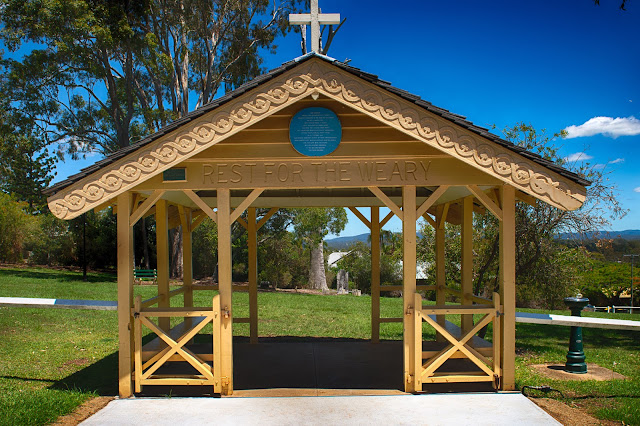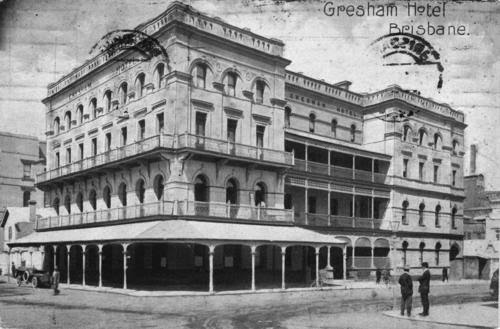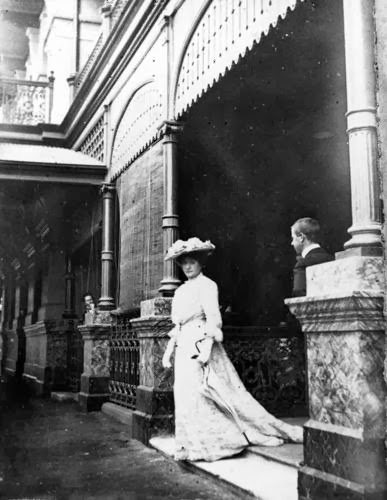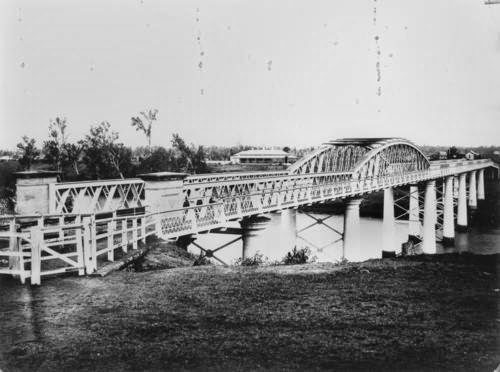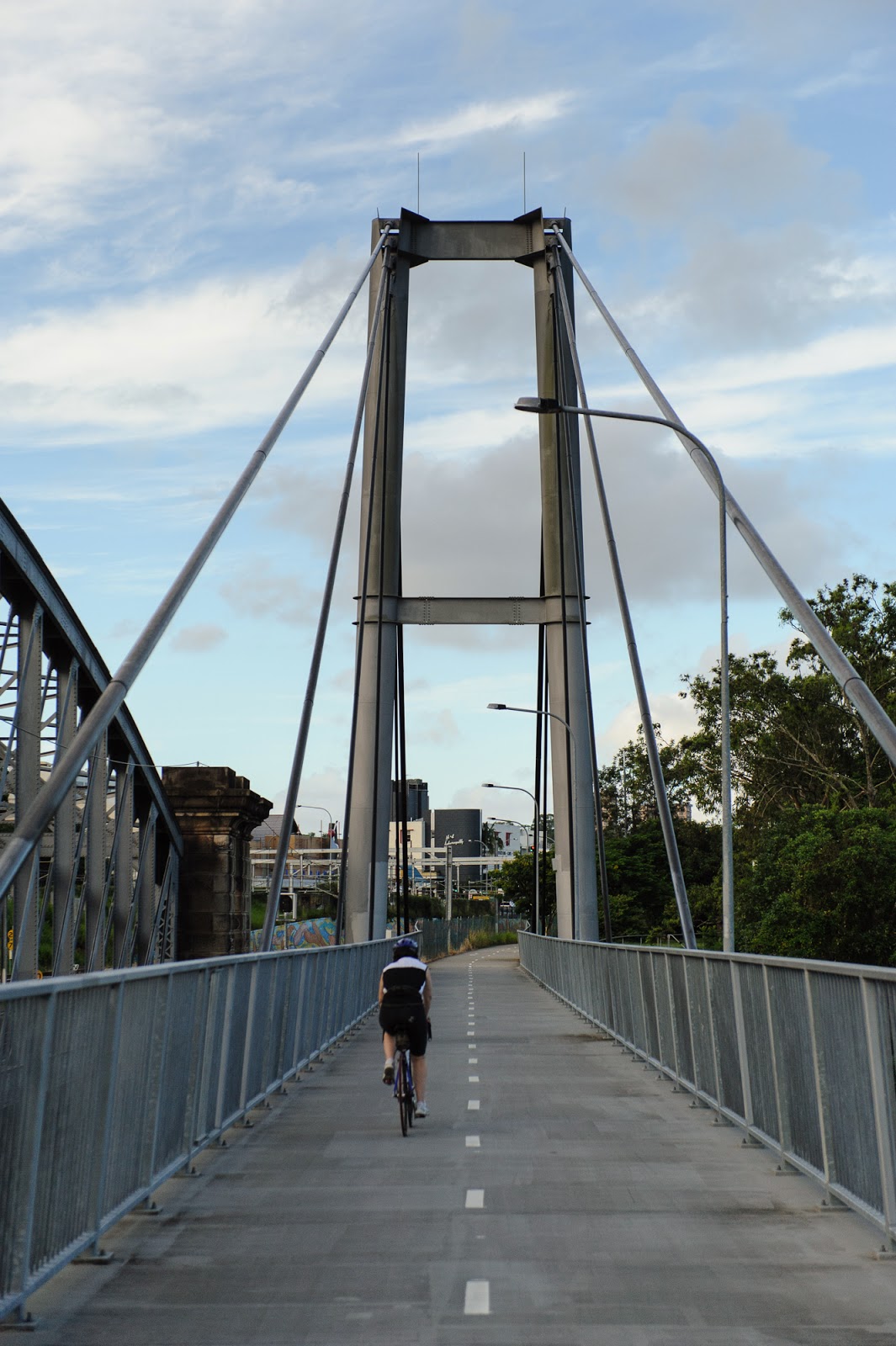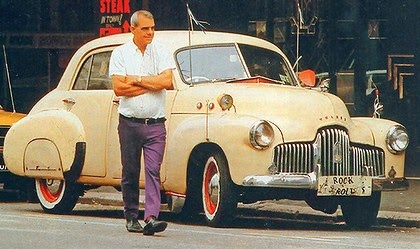Sending young men off overseas to wage war over wealth lying beneath the ground is, unfortunately, not a new occurrence. At the very start of its existence Australia was in the throes of war. The second Boer War in South Africa started in October 1899 when the South Africans decided that they had had enough of the British annexing their land and eyeing off the gold and diamonds beneath it. This resulted in Orange Free State and Transvaal declaring war on Britain.The imperialist British politicians were up for the fight, and very quickly requested backup from their colonies around the world.
Prior to Federation the individual colonies raised volunteers to aid the "Mother Country" in the fight against the Afrikaners, and then following their assimilation into the new country of Australia, the nation itself continued to supply soldiers to this war. About 16,000 Aussies, including many Queenslanders, served in this brutal war in which 282 men died in action, a further 286 died from disease and another 38 died from accidents. Six Victoria Crosses were awarded as a result of heroism during the Boer War.
Amongst the Queenslanders who went over to South Africa were two lads from the then rural area of Sherwood, situated about 8 km from Brisbane. They were Robert Edwin Berry and John MacFarlane, both of the Fifth Contingent of the Queensland Imperial Bushmen (5QIB). They are pictured below.
![]()
![]()
On 4th January 1902, 110 men of 5QIB were involved in one of the last serious actions of the Boer War. They were caught in an ambush at Onverwacht where they were heavily outnumbered by Boers. In a furious firefight thirteen Queenslanders were killed, including the two volunteers from Sherwood - Sergeant Robert Berry and Acting Corporal John MacFarlane.
The shire of Sherwood was galvanized immediately upon hearing of the loss of their two young men. Recognising that the two would forever lie buried in South Africa, friends erected a monument to their memory in the cemetery in front of the Sherwood Anglican Church in Sherwood Road. They must have acted quickly, as the monument was unveiled on Saturday 21 June 1902 in the presence of the premier and other dignitaries, as well as surviving members of 5QIB and a large crowd. The church building was destroyed by fire in 1921 and replaced by a new church that is still standing on the corner of Oxley Rd and Sherwood Rd. Here is a photograph of the previous church taken in 1906.
(Photo: State Library of Queensland and John Oxley Library; #10044)
The memorial erected by the friends of the two soldiers remains in the Sherwood Anglican Cemetery which is situated down Sherwood Rd from the existing church, on the corner of Egmont St. The 4.6 metre-high monument to Robert Berry and John MacFarlane was constructed by Brisbane monumental masons W Batstone & Sons.
(Photo: © 2013 the foto fanatic)
Each year ceremonies are held at the Sherwood Monument and the Ermelo Monument. Students from Corinda High School here in Brisbane and Ermelo High School in South Africa participate in the memorial services held at the respective sites.
Click here for a Google Map.
tff
Prior to Federation the individual colonies raised volunteers to aid the "Mother Country" in the fight against the Afrikaners, and then following their assimilation into the new country of Australia, the nation itself continued to supply soldiers to this war. About 16,000 Aussies, including many Queenslanders, served in this brutal war in which 282 men died in action, a further 286 died from disease and another 38 died from accidents. Six Victoria Crosses were awarded as a result of heroism during the Boer War.
Amongst the Queenslanders who went over to South Africa were two lads from the then rural area of Sherwood, situated about 8 km from Brisbane. They were Robert Edwin Berry and John MacFarlane, both of the Fifth Contingent of the Queensland Imperial Bushmen (5QIB). They are pictured below.
(Photos:www.bwm.org.au)
The Fifth Queensland Imperial Bushmen left Australia in two tranches - 6th March 1901 and 10 March 1901 - and the contingent returned on 30 April 1902. Here is a photograph of the surviving members of 5QIB on their return to Australia.![]()
(Photo: State Library of Queensland and John Oxley Library; #54982)
On 4th January 1902, 110 men of 5QIB were involved in one of the last serious actions of the Boer War. They were caught in an ambush at Onverwacht where they were heavily outnumbered by Boers. In a furious firefight thirteen Queenslanders were killed, including the two volunteers from Sherwood - Sergeant Robert Berry and Acting Corporal John MacFarlane.
The shire of Sherwood was galvanized immediately upon hearing of the loss of their two young men. Recognising that the two would forever lie buried in South Africa, friends erected a monument to their memory in the cemetery in front of the Sherwood Anglican Church in Sherwood Road. They must have acted quickly, as the monument was unveiled on Saturday 21 June 1902 in the presence of the premier and other dignitaries, as well as surviving members of 5QIB and a large crowd. The church building was destroyed by fire in 1921 and replaced by a new church that is still standing on the corner of Oxley Rd and Sherwood Rd. Here is a photograph of the previous church taken in 1906.
(Photo: State Library of Queensland and John Oxley Library; #10044)
The memorial erected by the friends of the two soldiers remains in the Sherwood Anglican Cemetery which is situated down Sherwood Rd from the existing church, on the corner of Egmont St. The 4.6 metre-high monument to Robert Berry and John MacFarlane was constructed by Brisbane monumental masons W Batstone & Sons.
(Photo: © 2013 the foto fanatic)
The plaques on the monument read:
Top:"This monument is erected by friends in memory of Sergeant Robert Edwin Berry, aged 23 years and Acting Corporal John MacFarlane, aged 21 years, 5th Q.I.B., killed in action, Onverwacht, Transvaal, South Africa, 4th January, 1002."
Bottom:"This monument honours soldiers who fought for the Empire".
To the right of this monument lie at least five further Berry graves. The Berry family were pioneers of the Sherwood area and heavily involved in the Anglican community.
In 1962 the bodies of the Australian servicemen who died on this battlefield and were buried there were exhumed and reinterred in a Garden of Remembrance in the town of Ermelo, a South African town close to the place of the battle. A bronze plaque carrying the names of the thirteen men of 5QIB who died was dedicated at a service at the Sherwood Memorial on 4 January 2002, the centenary of the battle. The plaque was taken to South Africa and placed on a memorial that had been erected at the actual battle site at Onverwacht at its dedication on 4 February 2002, during a moving ceremony dedicated to the soldiers of both sides.
(Photo: www.bwm.org.au)Top:"This monument is erected by friends in memory of Sergeant Robert Edwin Berry, aged 23 years and Acting Corporal John MacFarlane, aged 21 years, 5th Q.I.B., killed in action, Onverwacht, Transvaal, South Africa, 4th January, 1002."
Bottom:"This monument honours soldiers who fought for the Empire".
To the right of this monument lie at least five further Berry graves. The Berry family were pioneers of the Sherwood area and heavily involved in the Anglican community.
In 1962 the bodies of the Australian servicemen who died on this battlefield and were buried there were exhumed and reinterred in a Garden of Remembrance in the town of Ermelo, a South African town close to the place of the battle. A bronze plaque carrying the names of the thirteen men of 5QIB who died was dedicated at a service at the Sherwood Memorial on 4 January 2002, the centenary of the battle. The plaque was taken to South Africa and placed on a memorial that had been erected at the actual battle site at Onverwacht at its dedication on 4 February 2002, during a moving ceremony dedicated to the soldiers of both sides.
Each year ceremonies are held at the Sherwood Monument and the Ermelo Monument. Students from Corinda High School here in Brisbane and Ermelo High School in South Africa participate in the memorial services held at the respective sites.
Click here for a Google Map.
tff




















